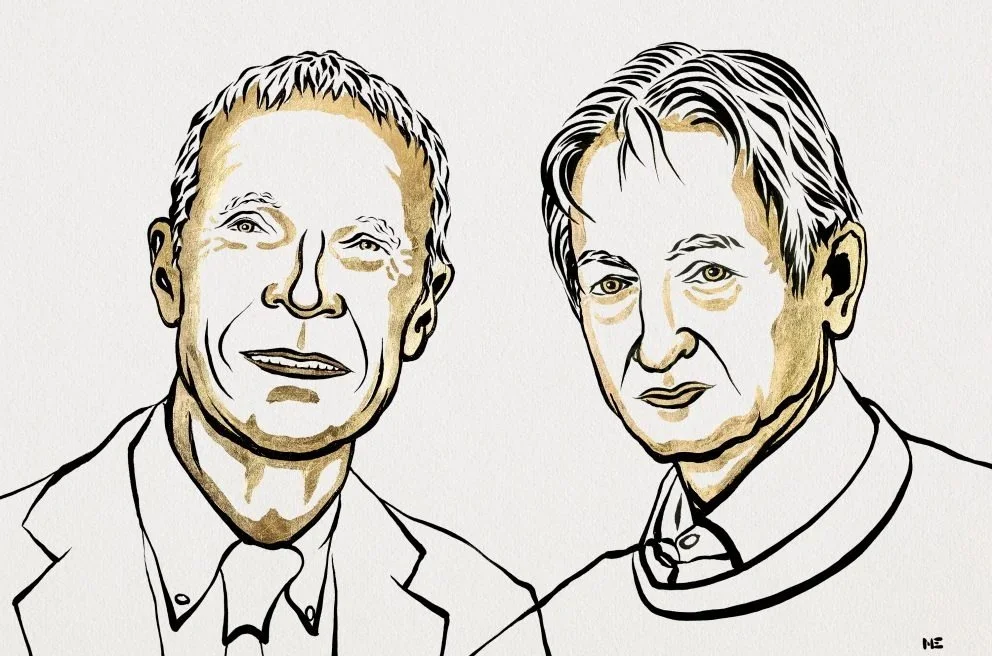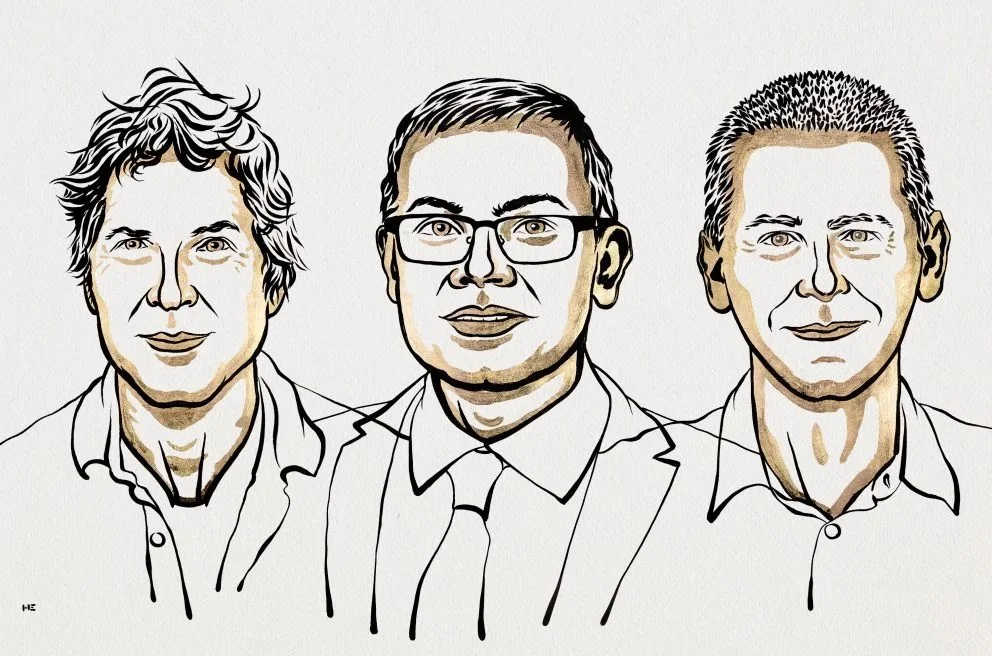AI Wins Big at the Nobel Prizes: How Artificial Intelligence is Transforming Physics and Chemistry
Artificial intelligence is no longer just a promising frontier—it has arrived and is reshaping the world as we know it.
This past week, the Royal Swedish Academy of Sciences announced its 2024 Nobel Prize winners across various fields, marking a historic moment for AI. Both the Nobel Prizes in Physics and Chemistry were awarded to researchers whose work with AI has had a profound impact on the scientific community.
This signals a major crossover: AI is now driving breakthroughs in the hard sciences, and the hard sciences are inspiring innovations in AI.
Physics inspired the invention of new methods in machine learning.
John Hopfield and Geoffrey Hinton. Illustration by Niklas Elmehed. © Nobel Prize Outreach.
This year’s Nobel Prize in Physics was awarded to two pioneers of machine learning: John Hopfield and Geoffrey E. Hinton, “for foundational discoveries and inventions that enable machine learning with artificial neural networks.”
John Hopfield, a professor at Princeton University, invented the Hopfield Network—an associative memory system that can store and reconstruct patterns, like images, from data. Meanwhile, Geoffrey Hinton, often called the “godfather of deep learning,” developed the Boltzmann Machine, a type of neural network that can autonomously discover properties in data. This enables it to perform tasks such as identifying specific elements in pictures. These innovations laid the groundwork for the AI systems we rely on today, and both are rooted in the principles of physics.
Hopfield and Hinton’s discoveries show how physics itself inspired the development of AI, leading to innovations that now help us push the boundaries of both science and technology.
“The laureates’ work has already had a tremendous impact. In physics, we use artificial neural networks in a vast range of areas, from developing new materials to identifying specific properties.”
— Ellen Moons, Chair of the Nobel Committee for Physics
AI is paving the way for significant breakthroughs in chemistry.
David Baker, Demis Hassabis and John Jumper. Illustration by Niklas Elmehed. © Nobel Prize Outreach.
AI’s influence didn’t stop at physics. The Nobel Prize in Chemistry was awarded to David Baker, Demis Hassabis, and John M. Jumper for their work in computational protein design and protein structure prediction, two breakthroughs that are revolutionizing biology.
David Baker, a professor at the University of Washington and investigator at Howard Hughes Medical Institute, was able to use different amino acids to design a new kinds of proteins. On the other hand, Demis Hassabis and John M. Jumper from Google DeepMind developed AlphaFold2, a model that can predict the 3D structure of proteins. In a groundbreaking achievement, AlphaFold2 has predicted the structures of nearly all known proteins—around 200 million of them.
Their work proves that AI isn’t just a tool—it’s a powerful engine of discovery.
“These discoveries fulfill a 50-year-old dream of predicting protein structures and open up vast possibilities for future research and applications in medicine, biotechnology, and beyond.”
— Heiner Linke, Chair of the Nobel Committee for Chemistry
AI winning two Nobel Prizes this year isn’t just a win for computer science—it represents a transformative shift in the hard sciences.
AI is no longer just a tool for analyzing data. It’s helping scientists make discoveries that weren’t possible before. As AI continues to evolve, its influence in physics, chemistry, and biology will only grow, opening the door to even more groundbreaking achievements in the future.
This is just the beginning.


